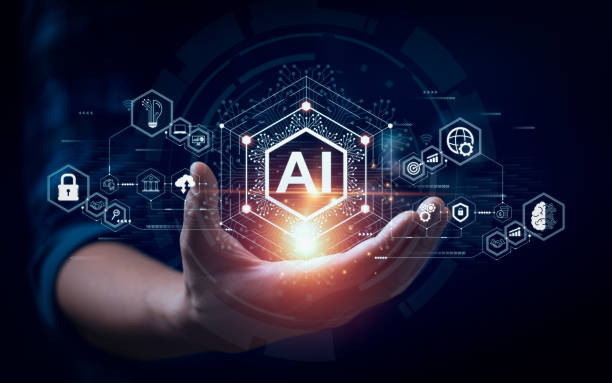What Is AI Technology?
AI can automate repetitive tasks and free up human capital for more important work. It also reduces errors, which can be costly to businesses.
Examples of AI applications include virtual assistants like Siri and Alexa, social media recommendation algorithms and cross-selling tools in e-commerce. AI can also help companies better understand their data by identifying trends and insights.
What technology is AI?
AI describes a machine’s ability to perform the cognitive functions we associate with human minds, including perceiving, reasoning, learning and interacting with an environment. It enables computers to process data and make decisions without explicit programming.
In the 1990s, increased data and computing power fueled an AI renaissance, resulting in breakthroughs in natural language processing (NLP), computer vision, robotics and machine learning. These advancements propelled IBM’s Deep Blue to defeat chess champion Garry Kasparov and gave rise to chatbots on websites and voice assistants like Siri and Alexa.
Some experts argue that the race to develop AI will lead to a global technological arms race. The United States and China have taken a leadership role in AI development, and some governments are stepping up efforts to govern AI. This includes setting standards for AI safety and encouraging companies to voluntarily adopt them, which could help limit the impact of harmful AI on their communities. The United States recently banned exports of the most powerful semiconductor chips used to train AI systems, and it is urging U.S. allies to follow suit, citing national security concerns.
What are the 4 types of AI technology?
There are four distinct types of AI that we can classify based on their functionality: reactive machines, limited memory machines, theory of mind AI and self-aware AI. Reactive AI is a type of machine that uses data to perform certain tasks, such as image recognition or natural language processing. These systems are unable to store and recall past information, and they only use the current data that they have in front of them. For example, a rule-based chatbot that follows an “if/then” model and has canned responses falls under this category.
Limited memory AI is a more advanced form of AI that can remember and utilize historical data to make decisions. It is used in systems like autonomous vehicles, which are able to continuously monitor the conditions around them and adjust their behavior accordingly. This is accomplished through reinforcement learning, where the system learns to take actions that maximize rewards. It also employs Markov decision processes to model different outcomes and select the most likely outcome. Ultimately, limited memory AI will allow for better prediction of future events and improved performance over time.
How is AI used today?
The applications of AI are diverse. We use it in everything from search engines and virtual assistants to automated stock management systems, medical diagnostics and even website design. But the most impressive uses of AI involve complex data analysis and prediction.
AI-driven recommendations and predictive analytics help e-commerce websites increase sales. Likewise, NLP-powered chatbots enable consumer assistance and free up human resources to handle more difficult cases.
In healthcare, AI tools make it easier for radiologists to spot cancerous tumors or bacterial infections on Computer Tomography (CT) images. They also speed up processing times by identifying patterns and eliminating repetitive manual tasks.
Business leaders who harness AI gain competitive advantage. The most successful organizations are those that move beyond dipping a toe into the AI pool and scale up their practices to fully integrate it. They are more likely to link their AI strategies to business outcomes and industrialize their operations by creating modular data architecture. They also prioritize hiring and upskilling the best AI talent. In addition, they invest more in R&D and collaborate across departments to build AI capabilities.
What is the concept of AI technology?
AI involves machines learning through progressive training algorithms to recognize patterns and data. This is how AI helps you play games, operate autonomous cars or make accurate medical diagnoses with fewer resources. It also enables you to order products from websites and hail rides with voice assistants on your phone or use a computer program to translate into another language.
Weak AI, also known as Narrow AI, drives most of the AI you interact with today. This includes chatbots, smart speakers with voice assistants like Alexa or Siri, and virtual assistants on your smartphone, such as ChatGPT and Bing.
AI-powered tools help website owners automate routine tasks and enhance user experiences. For example, a website owner can use an AI-powered content moderation tool to eliminate repetitive tasks and free up staff for more strategic work. AI can also automate inventory management, eliminating manual processes and optimizing stock levels. This allows website owners to improve customer satisfaction while reducing the risk of product shortages and overstocking. AI can also bolster security measures by automatically identifying and mitigating threats.
How to learn about AI?
There are a number of ways to learn about AI. You can take introductory courses or bootcamps that offer an overview of the subject, or you can pursue an online degree program that provides the foundational knowledge and skills you need to be successful in the field. The most important thing is to start small and build on your successes. Try to apply your learning to real-world projects, such as building a chatbot or machine learning model.
Another great way to learn about AI is to read books or articles on the topic. You can also join discussion forums and blogs that focus on AI topics, or you can attend industry conferences to stay up-to-date on the latest developments in the field.
It’s also important to have a strong background in data science and programming to succeed as an AI professional. You can begin by taking a programming course that covers the fundamentals of Python or R. Once you have these skills, you can start exploring ML and deep learning frameworks like NumPy and Keras.
How was AI created?
AI was first developed in the 1950s, with research inspired by human intelligence and natural languages. Scientists began using computer programs to understand language and make calculations. This led to the development of algorithmic programming, which allows computers to perform repetitive tasks without tiring.
The early years of AI were marked by significant breakthroughs and a boom in funding. The Japanese government heavily funded projects like expert systems and the Fifth Generation Computer Project (FGCP).
By the 1980s, research had progressed to a new level. Computers could now use memory to learn from experience and improve over time. This was known as limited-memory artificial intelligence. IBM’s Deep Blue that defeated chess champion Garry Kasparov was an example of this type of AI.
Today, AI has reached an unprecedented level of sophistication and utility. It is used in a wide range of industries and can be found in products such as voice assistants, self-driving cars, and medical diagnostic tools. However, this technology isn’t perfect and can sometimes create misleading or incorrect information. Additionally, it may be prone to ethical and legal challenges, such as inadvertently violating copyright laws or biasing opinions.
Is AI good or bad?
Whether AI is good or bad depends on how it’s used. If it’s designed to automate manual tasks and reduce labor costs, businesses can save money on wages and benefits. This can lead to greater efficiency and productivity, as well as higher profit margins.
However, if AI is used to replace human workers, it can be problematic. People may feel uncomfortable or even fearful about losing their jobs to automation. Furthermore, some worry that AI could be programmed with human biases and lead to unfair decisions.
AI can also create new opportunities for work. For example, it can help manufacturers grow their business by streamlining production procedures and ensuring product quality. It can also improve customer service by providing better online support.
Another advantage of AI is that it can work 24×7 without getting tired. This can free up human time to focus on other tasks or personal life. Moreover, it can solve complex problems faster and more accurately than humans. This can lead to more creative solutions and improved products.
Why do we need AI?
AI helps companies handle tasks at a volume and velocity that’s simply not possible for humans to match. Whether it’s to search, analyze data for insights or create software code, AI makes business processes much faster and more efficient.
Another benefit of AI is its ability to reduce human error. For example, an AI system can scan medical images for signs of disease, which could save lives and help doctors make more accurate diagnoses. AI also enables more precise targeting in marketing, which means organizations can reach consumers who are most likely to be interested in their products or services.
While these benefits are significant, there are some concerns about the use of AI. For one, AI systems can be influenced by the data they’re fed and may be biased against certain groups. This can lead to discrimination and other unfair outcomes. In order to address these issues, it’s important for governments to put in place policies that protect individuals and encourage innovation. This includes ensuring that AI systems are transparent and accountable, requiring that they make their source code available for inspection and allowing humans to test their decision-making process in real-time.



